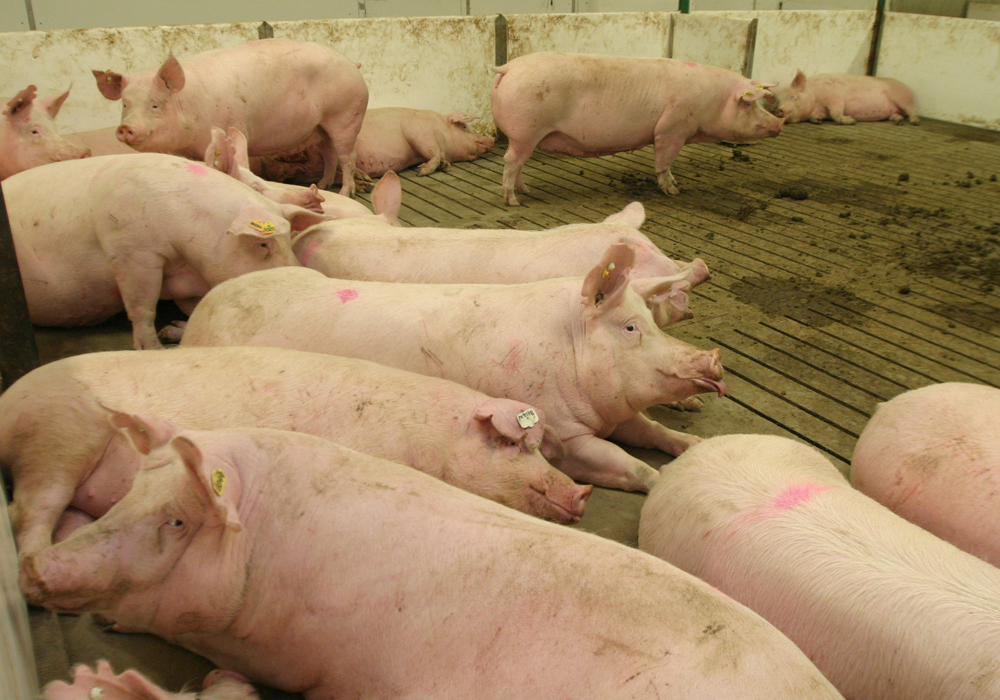A veterinarian says converting a barn to open-sow housing is not a simple task; unforeseen problems may add cost and time to the renovation
In 2014, pig producers in Canada were instructed to move their sows from stalls to loose housing by 2024 as part of changes to national pig code of practice.
Ten years seems like enough time to make such a transition, but converting a pig barn to open-sow housing is not a simple task, said Egan Brockhoff, a veterinarian with Prairie Swine Health Services in Red Deer, Alta.
Sows are more aggressive when pregnant, which can be problematic when they’re kept in groups.
There are many decisions a producer must make when changing a barn to open housing. Someone may have a vision of what the new barn could look like, but unforeseen problems with wiring, structure and ventilation may add cost and time to the reno.
Read Also

Farming Smarter receives financial boost from Alberta government for potato research
Farming Smarter near Lethbridge got a boost to its research equipment, thanks to the Alberta government’s increase in funding for research associations.
“They (producers) are trying to build a loose housing system on top of existing infrastructure,” Brockhoff said. “Working with farms for the last 15 years on this… you realize how complicated it is to take an old site and convert it into a successful new site…. There is no playbook on the ideal loose housing model.”
Brockhoff cited questions producers must address when switching from sow stalls to open housing:
- Where to do breeding? Are you going to do breeding in a stall?
- What kind of flooring in the pen?
- What kind of feeders? Individual feeders?
- Will the sows be kept in a dynamic system (large group), or a static system (many small groups)?
“Much is going on in the producers’ minds, as they’re trying to make this transition,” Brockhoff said.
For example, take a farm that has 300 sows that are kept in one group during gestation.
Every week, about 10 sows may be removed from the group for farrowing and another 10 may be returned to the main pen.
“All of the sows I weaned this week, I’m going to breed them and put them into that group,” Brockhoff explained. “That group’s population is dynamic. Every week new sows are being added… (some) sows are being removed.”
Or a producer could go with a static system, where a small number of sows are kept in the same group during breeding, gestation and farrowing. That model of open housing completely changes the barn design.
“Your barn will be filled with smaller, loose housing pens.”
It’s not obvious which system is better for welfare. With a single, large pen for gestating sows, the animals have more room to avoid rivals.
“If you can move away from each other, social conflict can actually disperse,” Yolande Seddon, an expert in swine health and welfare at the Western College of Veterinary Medicine in Saskatoon, said in 2017. “We know that sows will do subgrouping within a large group. They will develop their friendship circles.”
The Western Producer contacted Seddon for this story but she wasn’t available before deadline.
There is also the issue of genetics. Some sows have adapted to group housing. Others have struggled with the change, Brockhoff said.
Hog producers have had a similar experiences. Some barn transitions have been smooth, with minimal hassle and no loss of productivity. Other conversions have been bumpy.
The manufacturers of barn equipment are also adapting to the new rules. They have designed electronic feeding systems and other technology that’s suited for open sow housing.
“With new technology we can do dynamic groups. You really couldn’t do dynamic groups 10 years ago, very easily,” Brockhoff said.
In an ideal world, all producers in Canada would simply build a new barn and design it for group housing — kind of like knocking down an old house and replacing it with a new build.
But a new barn costs millions of dollars.
“Assuming you have the money, often it is so much simpler if you can build new,” Brockhoff said. “But there is no perfect playbook (for group housing), even on building new.”


















